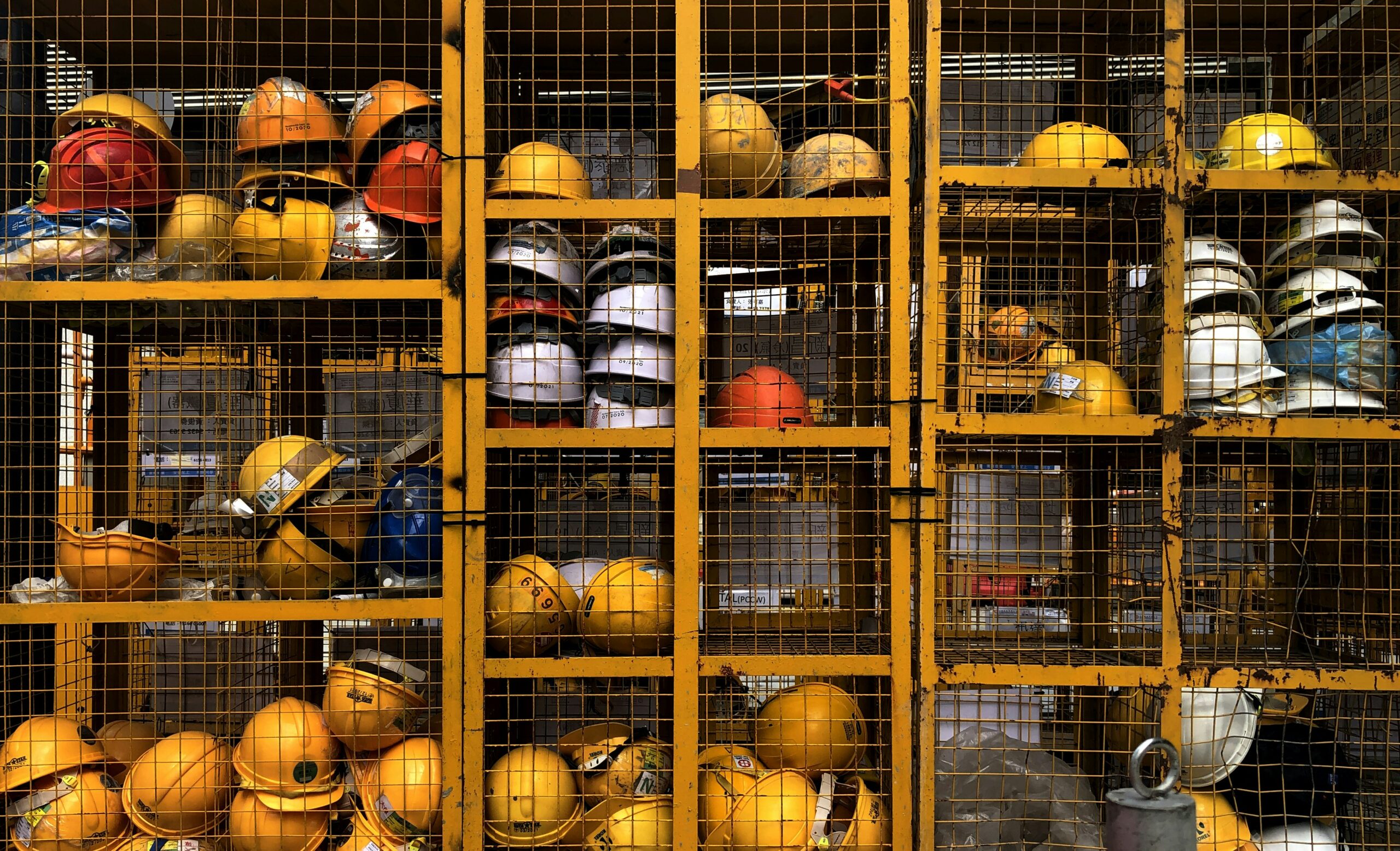Living in an area prone to earthquakes may seem daunting, but being prepared can give you peace of mind and potentially save your life. In this article, we will explore simple and practical ways to prepare yourself and your home for an earthquake, so that when disaster strikes, you can confidently navigate through it. From creating an emergency kit to securing heavy furniture, you will find valuable tips that will help keep you and your loved ones safe in the face of this natural phenomenon. So, let’s dive in and discover how you can effectively prepare for an earthquake.

Understanding Earthquakes
What is an earthquake?
An earthquake is a natural phenomenon characterized by the sudden shaking of the ground caused by the movement of rocks in the Earth’s crust. This movement occurs along fault lines, which are fractures in the Earth’s surface where the rocks have shifted. The energy released during an earthquake travels in waves through the Earth, causing the ground to shake.
Different types of earthquakes
There are several types of earthquakes, each with its own unique characteristics. The most common type of earthquake is known as a tectonic earthquake, which occurs when the Earth’s crustal plates collide, slide past each other, or separate. These earthquakes can range in severity from minor tremors to major disasters.
Another type of earthquake is a volcanic earthquake, which is directly related to volcanic activity. These earthquakes occur when magma rises to the surface, causing the surrounding rocks to fracture and shake. While volcanic earthquakes are generally localized to volcanic regions, they can sometimes be felt over larger distances.
A third type of earthquake is known as a collapse earthquake, which happens when underground structures such as mines or caverns collapse due to activities like mining, fracking, or the extraction of natural resources. These earthquakes are usually smaller in scale but can still cause damage and pose a threat to nearby communities.
Areas prone to earthquakes
Earthquakes can occur anywhere in the world, but some regions are more prone to seismic activity than others. The Pacific Ring of Fire is one of the most seismically active areas on the planet, stretching from the western coast of the Americas to Asia. This region is characterized by frequent volcanic eruptions and large tectonic earthquakes.
Other areas with high earthquake activity include the Alpide Belt in Europe and Asia, the Mediterranean region, and parts of Africa. Within these regions, specific countries like Japan, Indonesia, Mexico, and Turkey are particularly vulnerable to earthquakes.
Understanding the geography and history of seismic activity in your area can help you assess your earthquake risk and take appropriate measures to prepare for such an event.
The Potential Risks and Impacts of Earthquakes
Structural damages
One of the most significant risks posed by earthquakes is the potential for structural damage to buildings and infrastructure. The intense shaking caused by seismic waves can lead to the collapse of poorly constructed buildings, bridges, and other structures. Even well-built structures can suffer structural impairments, such as cracked foundations or damaged walls, putting occupants at risk.
To mitigate the risk of structural damage, it is essential to ensure that buildings are constructed to withstand seismic activity. This can be achieved through the implementation of building codes that require earthquake-resistant designs and materials.
Risks to human life
The immediate danger posed by earthquakes is the risk to human life. Falling objects, collapsing buildings, and the disruption of essential services like electricity, water, and transportation can all contribute to injuries and fatalities during an earthquake.
Education and awareness play a crucial role in reducing the risk to human life. Knowing how to react during an earthquake, such as taking cover under sturdy furniture or seeking shelter in a safe area, can significantly improve survival rates.
Economic repercussions
Earthquakes can also have significant economic repercussions. The destruction of buildings, infrastructure, and businesses can lead to substantial financial losses for individuals and communities. The cost of rebuilding and repairing damaged areas can be astronomical, and the economic impact can be felt for years following a severe earthquake.
Having proper insurance coverage is essential in alleviating the financial burden of earthquake damage. Ensuring that you have comprehensive coverage for your property and belongings can provide peace of mind and help with the recovery process.
Getting Earthquake-Ready at Home
Securing heavy furniture and appliances
Securing heavy furniture and appliances is an important step in preparing your home for an earthquake. During seismic activity, these items can become hazards if they topple over or slide around. Use furniture anchors, straps, or brackets to secure large items such as bookshelves, cabinets, and TVs to the wall or floor. Additionally, ensure that heavy appliances like refrigerators and water heaters are properly anchored and won’t tip over during shaking.
Storing hazardous materials properly
It is crucial to store hazardous materials safely in your home to minimize the risk of exposure during an earthquake. Chemicals, cleaning agents, and flammable materials should be stored in well-ventilated, secure locations away from potential ignition sources. Ensure that these items are properly sealed and labeled to avoid leaks or spills.
Creating a safe space
Having a designated safe space in your home can provide a refuge during an earthquake. Identify an area that is structurally sturdy, such as under a sturdy table or against an interior wall, away from windows and heavy objects. Clear this space of any potential hazards and ensure that it is easily accessible at all times. Consider keeping emergency supplies, such as a flashlight, a first-aid kit, and a portable radio, in or near this safe space.
Creating Your Emergency Plan
Determining safe spots in home
When creating your emergency plan, it is important to identify safe spots in your home where you can take cover during an earthquake. These safe spots should be structurally sound and away from potential falling hazards. Teach every member of your household, including children, the locations of these safe spots and practice taking cover during earthquake drills.
Establishing communication plans
Establishing a communication plan with your family members and loved ones is crucial in the event of an earthquake. Identify a designated out-of-area contact person who can serve as a central point of communication. Share this person’s contact information with every family member and instruct them to contact this individual to provide updates on their safety and whereabouts.
Additionally, make sure that everyone in your household knows how to use their mobile phones to send text messages, as text messages are often more reliable than phone calls during times of high network congestion.
Planning evacuation routes
In some cases, it may be necessary to evacuate your home or immediate area following an earthquake. Plan and identify multiple evacuation routes in advance, taking into consideration potential obstacles such as collapsed buildings or debris. Make sure every family member knows the primary and alternate evacuation routes and establish a predetermined meeting point outside the affected area.

Assembling an Emergency Earthquake Kit
Essential items to include
Assembling an emergency earthquake kit is essential to ensure you have necessary supplies during and after an earthquake. Some essential items to include in your kit are:
- Water: Have at least one gallon of water per person per day for at least three days.
- Non-perishable food: Stock up on canned goods, energy bars, and other non-perishable food items that can sustain you for several days.
- First-aid kit: Include bandages, antiseptic ointment, pain relievers, and any necessary prescription medications.
- Flashlight and extra batteries: Ensure you have a reliable light source, as power outages are common during earthquakes.
- Blankets and warm clothing: Prepare for the possibility of being without electricity or heating by having warm clothing and blankets readily available.
- Personal hygiene items: Include items such as toilet paper, hand sanitizer, and wet wipes.
- Portable radio: Keep a battery-powered or hand-cranked radio to stay informed about emergency updates and instructions.
Storing and maintaining your kit
Store your emergency earthquake kit in a location that is easily accessible and known to all family members. Check and rotate the supplies regularly to ensure that food and water are within their expiration dates. Additionally, keep a list of important documents, such as identification papers, insurance policies, and emergency contact numbers, in a waterproof container within your kit.
Getting Proper Insurance Coverage
Understanding the types of damages
Understanding the types of damages that can occur during an earthquake is essential in determining the appropriate insurance coverage. Some common types of damages caused by earthquakes include structural damages to buildings, damage to personal property, and loss of use or displacement expenses.
It is crucial to review your insurance policy and discuss earthquake coverage with your insurance provider. Standard homeowner’s insurance policies typically do not cover earthquake damage, so additional earthquake insurance may be necessary.
Choosing the right plan
When choosing earthquake insurance, consider factors such as the earthquake risk in your area, the value of your property, and your personal financial situation. Evaluate the coverage limits, deductibles, and exclusions of different policies to determine which option best suits your needs.
Consider consulting with an insurance professional who specializes in earthquake insurance to ensure you have adequate coverage and understand the terms of your policy.
Knowing your insurance rights
It is essential to know your insurance rights as a policyholder when it comes to earthquake coverage. Familiarize yourself with the claims process, including how to report damages and initiate a claim. Keep thorough documentation of your property, including photographs and inventory lists, to support your claim in case of damage.
Review and understand the terms and conditions of your policy, including any exclusions or limitations. If you have any questions or concerns, don’t hesitate to reach out to your insurance provider for clarification.

Educational and Training Resources
Earthquake safety workshops
Participating in earthquake safety workshops can provide valuable knowledge and skills to help you prepare for and respond to an earthquake. These workshops often cover topics such as emergency planning, building safety, and first-aid techniques. Local emergency management agencies, community centers, or schools may offer these workshops, so be sure to check for opportunities in your area.
First-aid training
Knowing basic first-aid techniques can be life-saving in the aftermath of an earthquake. Consider enrolling in a first-aid training course to learn skills such as CPR, wound care, and treating common injuries. Organizations such as the American Red Cross offer first-aid training programs that cover a wide range of emergency situations.
Online resources for preparedness
Many online resources offer comprehensive information on earthquake preparedness. Government agencies, such as the Federal Emergency Management Agency (FEMA), provide detailed guides and resources on their websites. Additionally, reputable non-profit organizations and scientific institutions offer educational materials and interactive tools to help individuals and communities become more earthquake-ready.
Take advantage of these online resources to educate yourself, your family, and your community about earthquake preparedness strategies and best practices.
Earthquake Preparedness for Children and Elderly
Introducing earthquake safety to children
Teaching children about earthquake safety is crucial in ensuring their well-being during seismic events. Start by explaining what an earthquake is in age-appropriate language and address any fears or concerns they may have. Show them the safe spots in your home and practice taking cover during earthquake drills.
Use educational resources tailored for children, such as books, videos, or interactive games, to make learning about earthquakes engaging and fun. Encourage open discussions and answer their questions to alleviate any anxieties they may have.
Special considerations for seniors
Seniors may have unique needs and considerations when it comes to earthquake preparedness. Mobility issues, chronic health conditions, and the need for specialized medical equipment should be taken into account when developing emergency plans. Make sure seniors have easy access to emergency supplies, including medications, and consider connecting them with support services or community organizations that can assist during an earthquake.
Regularly check in with senior family members, friends, or neighbors to ensure they feel supported and informed about earthquake safety measures.
Making a plan that involves the entire family
Creating an earthquake preparedness plan that involves the entire family is crucial for maximum safety. Discuss potential scenarios, strategies for communication, and roles everyone should play during an earthquake. Assign specific tasks to family members, such as shutting off utility sources or grabbing essential items from the emergency kit.
Including children and seniors in the planning process ensures that everyone understands their responsibilities and knows what to do in case of an earthquake. Regularly revisit and update the plan as needed to accommodate changes in family dynamics or living arrangements.
Steps to Take After an Earthquake
Checking for injuries and damages
After an earthquake, your immediate priority should be checking for injuries and damages. Assess your health and the well-being of those around you. If you or anyone else is injured, administer first aid or seek medical attention as soon as possible.
Inspect your home for any damages, paying particular attention to structural integrity and gas, water, or electrical leaks. If you suspect any hazards or feel unsafe, evacuate the premises immediately and contact the appropriate authorities.
Contacting family members and loved ones
Communication is crucial in the aftermath of an earthquake. Reach out to your family members and loved ones to ensure their safety and well-being. Use the designated out-of-area contact person to provide updates and gather information about others. Be patient, as network congestion may delay communication efforts.
If you have difficulty reaching someone, consider posting on social media or using alternative communication methods, such as local radio stations, to share information and check for updates.
Reaching out to your insurance company
If your property has suffered damages as a result of the earthquake, contact your insurance company as soon as possible to initiate the claims process. Provide them with thorough documentation of the damages, including photographs, videos, and a detailed inventory list.
Follow the instructions provided by your insurance company and keep track of all communication and correspondence. Be aware of any deadlines for filing claims, as prompt action is often required to ensure a smooth claims process.
Long-term Earthquake Preparedness Strategies
Regularly updating emergency plans
Earthquake preparedness is an ongoing process, and it is essential to regularly update your emergency plans. Review and revise your evacuation routes, safe spots, and communication plans at least once a year, or whenever there are significant changes in your household or living arrangements.
Stay informed about the latest earthquake safety guidelines and advice from reputable sources to ensure that your emergency plans align with current best practices. Consider participating in periodic earthquake drills to practice and refresh your response skills.
Staying informed about new safety measures
As scientific research and technology continue to evolve, new safety measures and strategies for earthquake preparedness may emerge. Stay informed about the latest advancements by following updates from reputable sources such as government agencies, scientific institutions, and emergency management organizations.
Consider joining local earthquake preparedness groups or attending community meetings to stay connected with professionals and fellow residents who share your commitment to earthquake safety.
Maintaining an earthquake-ready home
Maintaining an earthquake-ready home involves regular upkeep and inspections to ensure that your property remains safe and secure. Regularly check for cracks in walls, floors, or foundations and address any issues promptly. Keep an eye on the condition of your home’s structural elements, such as roof shingles, for signs of wear or damage.
Update and maintain your emergency earthquake kit, replacing expired food, water, and batteries as needed. Regularly test battery-powered devices, such as flashlights or radios, to verify functionality. Involve all members of your household in the maintenance process to promote a shared responsibility for earthquake preparedness.
By understanding earthquakes, recognizing their potential risks, and taking proactive measures, you can better prepare yourself, your family, and your home for these natural events. Remember, earthquake preparedness is a continuous effort that requires ongoing education, planning, and practice. Stay informed, stay safe, and stay earthquake-ready!

